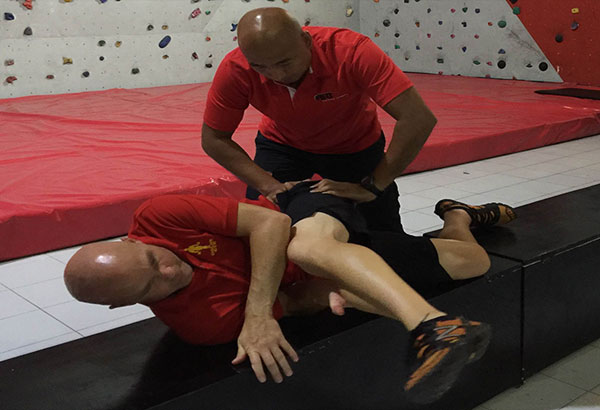Surviving the holiday traffic jam
When you need almost three hours to drive 13 kilometers at a crawling four kilometers per hour, you know that the Christmas rush is near. Driving to meetings was never as burdensome as now, especially since parking also is too difficult to find.
Acceptance of the situation is the first step to not getting stressed and frustrated. Proudly, the snarled traffic never frayed my nerves. Just enjoy the long drive. Listen to music, learn a language, pray the rosary, make calls. I have learned to cope. Waze makes me discover streets I never knew existed, and C3P-O of Star Wars as the new navigation voice!
While I have escaped any road rage, my upper back has clearly suffered from daily long drives. Rock hard and aching, I was clueless about what was wrong until my guest Jeremy Strom pointed it out. My hands were gripping the wheel above my chest, pulling my shoulders forward in a hunched position!
Your posture while driving could either prevent or cause back problems. Knees should be level with the hips, with chest a comfortable distance from the steering wheel. Reaching for the wheel increases pressure on the lumbar spine and will stress the neck, shoulder, and wrist.
Experts say that the strain on your lower back is triple, seated versus lying flat. When you lean forward when you drive, the effect is even worse.

The ART of staying healthy: PJ Rivera conducts active release technique on Jeremy Strom.
So, correct your posture while driving and prevent strain on your muscles, ligaments, and joints. Lean back a little bit with your back flattened on the seat. Make sure you can reach the steering wheel easily without any strain on your shoulders, arms or wrists.
Do not grip the wheel too tight as it will cause tension in your neck and shoulders, eventually causing pain. Do not slouch! Remind yourself to sit straight at all times.
While stuck in a red light or a crawling traffic, rotate your shoulders and turn your head from side to side. Relax your neck, shoulders, and back to prevent tension buildup.
Jeremy did not only point out the cause of my back problem, he also introduced me to a modality to correct the problem. He contacted his friend PJ Rivera who is the only Filipino with US certification on active release techniques or ART.
After a relieving quick manipulation, he answered a few questions.
THE PHILIPPINE STAR: What is ART and why does everyone need it?
PJ RIVERA: ART or active release techniques is a massage-based system designed to treat issues to muscle, tendon, ligament, fascia, and nerves. It was developed by Dr. Michael Leahy of the United States.
What made you get the certification?
I’m a triathlon coach. It’s frustrating when you train somebody and they get injured. I send them to the doctors. They get an X-ray, MRI or I send them to rehab. By the time they get back to me, often they are weak, their injuries are still there, and all gains we did in training are lost. With ART, downtime in training is minimal and it addresses the issues.
You are the only certified ART provider in the country, what is your vision for ART here?
I love the Philippines. I love sports. I’ve been into sports for over 30 years. I want the Filipino athletes to have access to gold standard in soft tissue treatment.
What is the most common problem you are treating right now? Why do you think this is so?
I have a lot of patients with shoulder issues and sciatica. With the shoulder, I think people are just overusing it. I actually treat more people with shoulder problems than lower back. With sciatica (nerve impingement to the sciatic nerve), I really don’t know. I barely heard about sciatica before I took ART. Maybe, we’re seating too much .... with the traffic and everything. Hahaha.
Is it right to say that only athletes need you? Why or why not?
What I do as an ART provider is to take out the scar tissues that develop in your body. Scar tissues can develop by overusing a muscle, tendons, etc., direct trauma, hypoxia (lack of blood flow to the area), and an operation. I treat a lot of seniors with mobility issues, frozen shoulder, grip problems, etc.
What was the most challenging case you handled? How did you succeed?
Nerves are tricky. Sometimes, treatment can be one session to six months.
What case are you most proud of? Tell us about it.
I once treated a senior citizen who had neck problems. After treating her neck, I asked her if anything was ailing her. She said she was due for a knee replacement. After treatment, she changed and came back to me. She told me she was able to kneel and pray. It was years since she was able to kneel! I also treated someone who could barely walk when he came into my clinic. A month later, he was an Ironman!
* * *
For more details, visit Active Release Techniques Philippines on Facebook.
Post me a note at mylene@goldsgym.com.ph or mylenedayrit@gmail.com



















